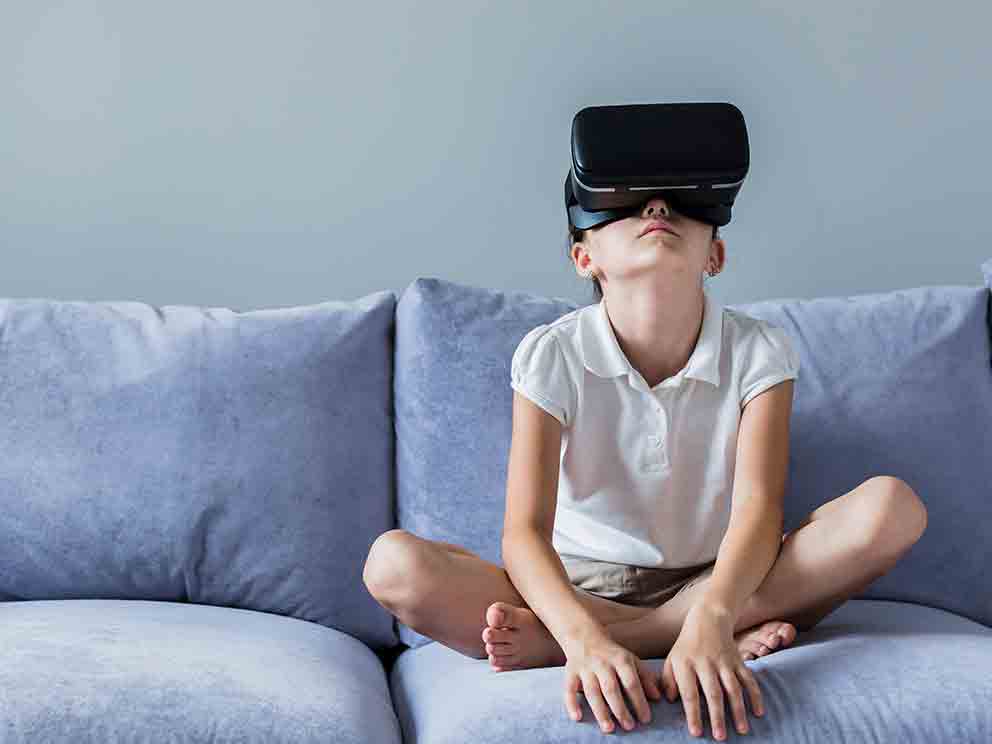Children’s use of digital technology has rapidly increased over the past decade. This is raising important questions around how time spent on digitally-mediated activities may affect children in positive or negative ways and to what extent parents must intervene. Kids engage in digital activities for various reasons such as playing games, streaming videos and shows, listening to songs, chatting with their friends, surfing the net. The question is no longer if children are using digital technology, but how, why, and with what impact. While digital technology does offer many potential benefits to children, there are many concerns around its detrimental impact on a child, be it social, cognitive or physical.
Throughout this week, we’ll be highlighting the different negative and positive impacts of technology on children. We will then share some tips on how to minimize the harmful effects and maximize the benefits of interactive screen time.
Please note that this will depend on the particular case and will need your judgment and in some cases a professional’s judgment on evaluating the extent of the harm. Overall, the evidence is inconclusive and research is still needed in order to truly understand the effects

Negative Effects
Cognitive/Mental Impact
Young children learn best through interaction with people and not screens. Being overly occupied with the screen and engaging in minimal eye contact with people might be harmful to their brain development especially during the very first years when the child’s brain is developing most rapidly. This impacts the development of insights, empathy, self-reflection, and connectedness in relationships as well as attention span and concentration. The exploration of concepts in three dimensions allows for better cognitive development in infants and toddlers since learning is enhanced through touching materials rather than viewing them on a screen.
Studies have shown that while high ability students are still able to concentrate with the presence of smartphones, low-achieving students are more vulnerable to such distractions and this is reflected in their achievement scores.
Social media is associated with body image concerns and disordered eating. As well as poorer sleep, higher levels of anxiety and depression, specifically when children and youngsters are emotionally invested in social media

The widespread and pervasive nature of social media allows harassment and bullying to travel beyond school and bother children in their homes. The digital space introduced new risks and stresses into young people’s lives. The fact that bullying can now take place anonymously further intensifies the destructing impact it may have. Just as with traditional forms of bullying, exposure to cyber-bullying may lead to a wide range of negative outcomes, including depressive symptoms, substance use, ideation and suicide attempts.
It was found that passive Facebook usage, browsing news feeds or looking at friends’ pages and pictures without interactions, led to a decrease in well-being by enhancing feelings of envy. Since profiles on social networking sites often convey a positive or the best possible image of a person, this might influence perceptions of other people and their lives leading to feelings of inadequacy or envy.
The existing studies and research that have been conducted claim that while excessive use might have a negative impact on children, not using digital technology is also expected to have a negative impact.
Conclusively, moderate levels of use could have a positive impact. There is, however, no clear understanding or agreement on what amount of time is considered moderate versus excessive, as this is likely to be highly individual. In other words, how much is too much? This greatly depends on the age of the child, her/his individual characteristics, the culture that she or he lives in and her/his broader life context.

We hope you found this article to be useful. It is important that you know that you are not alone in fighting this ongoing digital battle.
Sources:
Bavelier, Daphne, et al. “Children, Wired: For Better and for Worse.” Neuron, vol. 67, no. 5, 2010, pp. 692–701.,doi :10.1016/j.neuron.2010.08.035.
Okeeffe, G. S., and K. Clarke-Pearson. “The Impact of Social Media on Children, Adolescents, and Families.” Pediatrics, vol. 127, no. 4, 2011, pp. 800–804.,doi :10.1542/peds.2011-0054.
Vandewater, E. A., et al. “Digital Childhood: Electronic Media and Technology Use Among Infants, Toddlers, and Preschoolers.” Pediatrics, vol. 119, no. 5, 2007,doi :10.1542/peds.2006-1804.
“The Impact of New Digital Media on Children’s and Young Adult Literature.” Digital Literature for Children, doi:10.3726/978-3-0352-6577-4/14.
Chassiakos, Yolanda (Linda) Reid, et al. “Children and Adolescents and Digital Media.” Pediatrics, vol. 138, no. 5, 2016, doi:10.1542/peds.2016-2593.
Smahel, David, et al. “The Impact of Digital Media on Health: Children’s Perspectives.” International Journal of Public Health, vol. 60, no. 2, 2015, pp. 131–137.,doi:10.1007/s00038-015-0649-z.
“Screen Time and Young Children: Promoting Health and Development in a Digital World.” Paediatrics & Child Health, vol. 23, no. 1, 2018, pp. 83–83., doi:10.1093/pch/pxx197.
